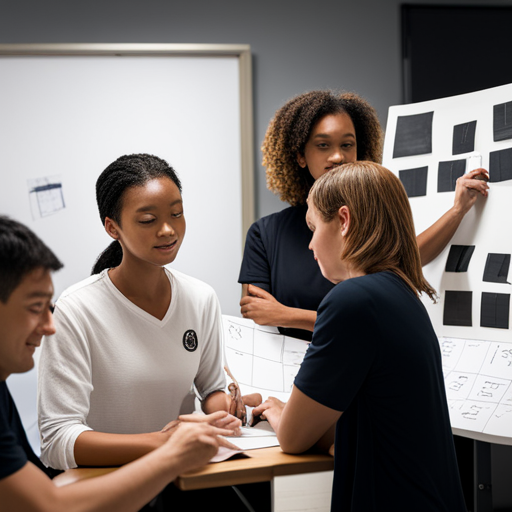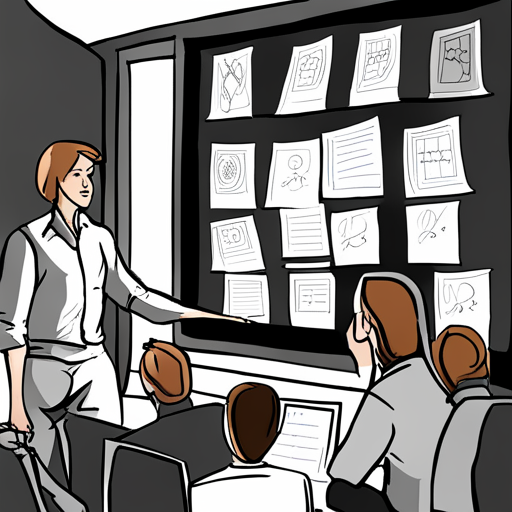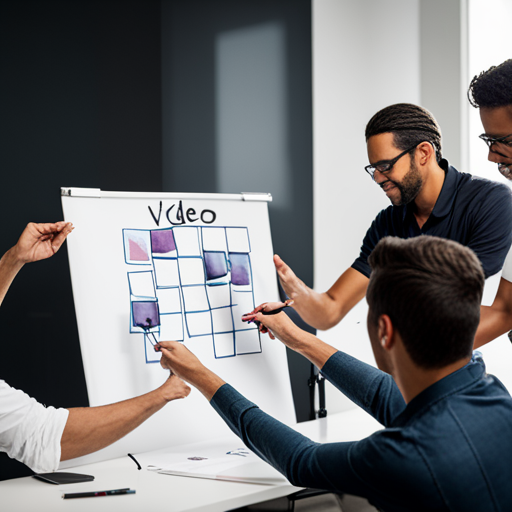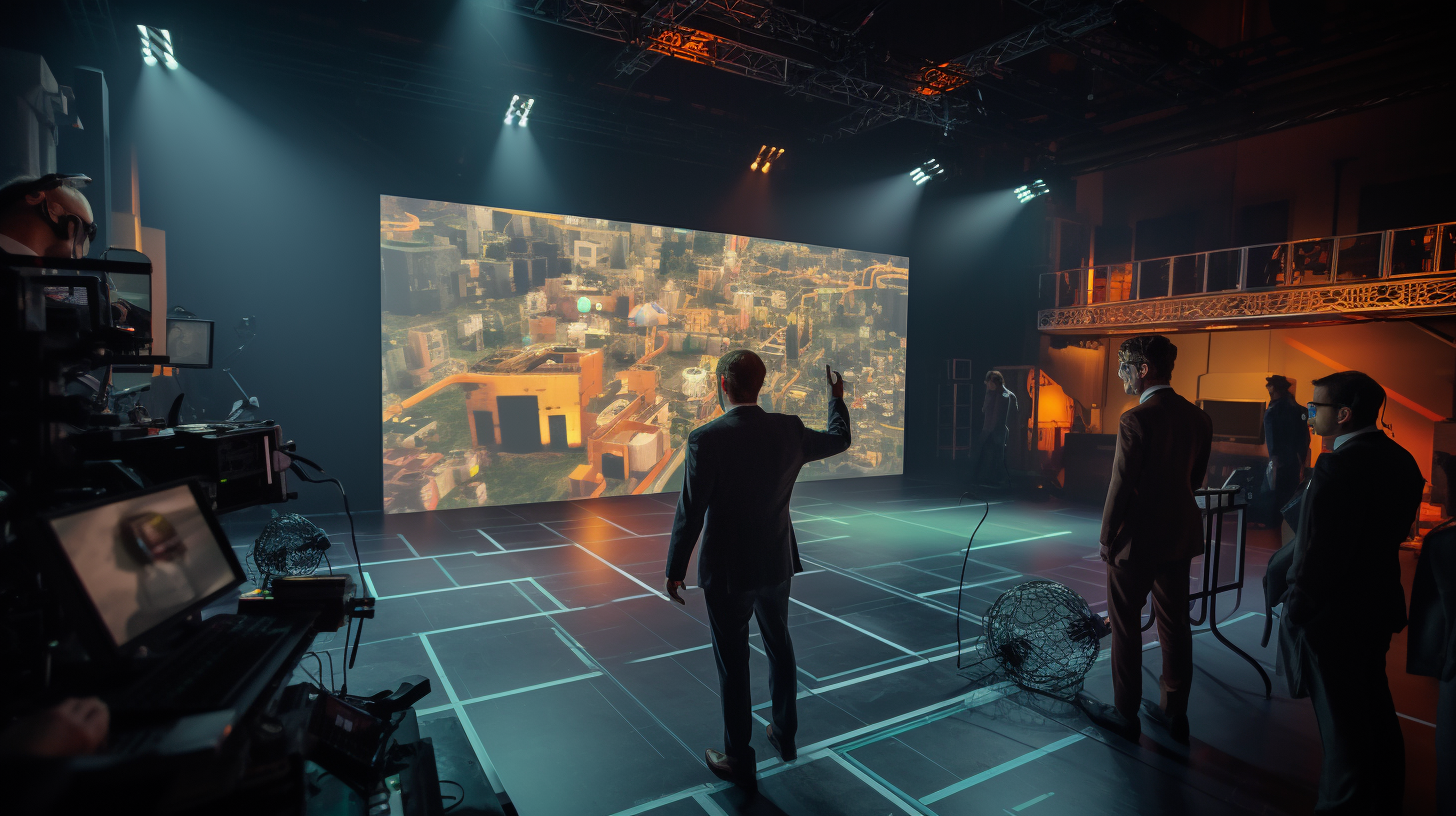If you’re involved in video production, you know that it’s a complex and often challenging process. There are many moving parts to manage, including scripting, casting, lighting, sound, and editing.
One essential aspect of the process that can help you stay organized and ensure that your final product meets your expectations is storyboarding.
Storyboarding is a visual planning tool that allows you to map out your video scene by scene, shot by shot. By creating a storyboard, you can see how your video will look and flow before you start shooting, which can save you time and money in the long run.
In this article, we’ll explore the benefits of storyboarding in video production and why it’s an essential tool for any filmmaker or videographer.
Defining Storyboarding in Video Production

You might think storyboarding in video production is just drawing pictures, but it’s actually a crucial step in visualizing and planning out your entire video project. Storyboarding techniques allow you to map out every shot, camera angle, and lighting setup before you ever hit the record button.
This process not only saves time and money but also ensures that you’re telling a coherent and compelling story. Storyboarding is a form of creative communication that bridges the gap between your vision and the final product. It helps you to translate abstract ideas into concrete visuals that everyone on your team can understand.
By having a clear roadmap, you can collaborate more effectively with your crew and talent, and make the most out of your shooting days. Storyboarding also allows you to experiment with different creative approaches and test out different ideas without wasting precious resources.
Whether you’re making a short film, a commercial, or a music video, storyboarding is an essential part of the filmmaking process. It allows you to plan out your shots, anticipate any potential problems, and stay on budget and on schedule. By taking the time to storyboard your video, you’ll be able to create a more polished and professional final product that connects with your audience.
Benefits of Storyboarding in Pre-Production

Get a head start on your video production project and save time by using storyboarding during the planning stage. Storyboarding is an essential process that helps you map out your ideas visually, allowing you to refine your message and ensure that the final product meets your expectations.
In addition, storyboarding is a collaborative process that encourages creativity and fosters teamwork among your production crew. Collaborative creativity is one of the key benefits of storyboarding. By involving your team in the storyboarding process, you can get different perspectives and ideas that can add depth and richness to your video.
This collaborative approach also helps to identify potential problems early on, allowing you to make necessary adjustments before you start filming. With storyboarding, you can visualize your ideas and communicate them more effectively, making it easier for your team to understand your vision and work together to achieve it.
Visual communication is another significant advantage of storyboarding. With a storyboard, you can create a visual representation of your story, complete with images that depict the action, dialogue, and camera movements. This visual representation helps to communicate your ideas more effectively, making it easier for your team to understand your vision and work towards achieving it.
Storyboarding is particularly useful in pre-production as it allows you to experiment with different concepts, styles, and techniques before committing to a final product.
In summary, storyboarding is an essential process in video production that offers numerous benefits, including collaborative creativity and visual communication. By using storyboarding in pre-production, you can get a head start on your project, refine your ideas, and ensure that your team is aligned with your vision. So, if you want to create a successful video that meets your expectations and engages your audience, make sure to incorporate storyboarding into your planning process.
Planning Shots and Camera Angles

When planning your shots and camera angles, it’s easy to fall into the trap of using the same angles repeatedly. However, don’t let that limit your creativity and impact your final product.
Storyboarding allows you to plan your shots and experiment with different camera angles to find the most visually compelling way to tell your story. By taking the time to plan each shot, you’ll be able to create a cohesive visual narrative that will engage and captivate your audience.
When planning your shots, it’s important to consider lighting considerations. Lighting can make or break a shot and can greatly impact the mood and tone of your video. Take the time to plan out your lighting setup and experiment with different lighting styles to find the look that best complements your story.
Additionally, sound design should also be considered when planning your shots. While it may not be immediately obvious, sound can greatly impact the emotional impact of your video. By planning out your sound design in advance, you’ll be able to create a more immersive experience for your audience.
Incorporating various camera angles and shot types can add depth and dimension to your story. Whether it’s a wide shot to establish a location, a close-up to capture emotion, or a tracking shot to follow movement, each shot type has its own unique purpose.
By storyboarding your shots in advance, you’ll be able to experiment with different shot types and find the ones that best convey your message. Don’t be afraid to try new things and push your creative boundaries – the more thought and planning you put into your shots, the more impactful your final product will be.
Troubleshooting Potential Issues

If something goes wrong during filming, it’s important to have troubleshooting skills to quickly resolve any issues and ensure a successful shoot. The collaborative process involved in video production means that there are often multiple people working on the project, which can create potential issues.
For example, if the lighting is not set up correctly, the camera may not capture the intended shot or the footage may be unusable. Troubleshooting skills are essential to identify and correct these issues before they negatively impact the final product.
An iterative approach to storyboarding can also help troubleshoot potential issues. By creating multiple versions of the storyboard, you can identify any problems with the shots or camera angles before filming begins. This process allows you to make any necessary changes or adjustments before the shoot, saving time and resources in the long run.
Additionally, revisiting the storyboard during filming can help troubleshoot any issues that arise on set.
In summary, having troubleshooting skills and using an iterative approach to storyboarding are crucial in video production. Collaborating with others and being prepared to address any potential issues can help ensure a successful shoot and a high-quality final product. Remember to always be proactive in identifying and correcting issues, and don’t be afraid to make changes to the storyboard or on set to get the best possible result.
Enhancing the Quality of the Final Product

To truly make your video shine, you’ll want to add those extra touches that make it sparkle like a diamond in the rough, like a chef adding the perfect seasoning to a dish.
Collaborative creativity is essential in enhancing the quality of the final product. Storyboarding is a process that allows you to bring together different creative minds and ideas to create a cohesive vision for your video. By storyboarding, you can ensure that your video follows a clear and concise visual storytelling structure.
This structure helps to keep your viewers engaged and connected to the message you are trying to convey. A well-crafted storyboard can also help you identify potential issues before you even begin filming, saving you time and money in the long run.
Visual storytelling is an art form that requires attention to detail and a keen eye for composition. The storyboard allows you to plan out the visual elements of your video, from camera angles to lighting to the placement of props. By doing so, you can create a video that is not only visually stunning but also reinforces your message.
So, don’t overlook the importance of storyboarding in video production. It’s a crucial step in the process that will help you enhance the quality of your final product.
Frequently Asked Questions
What software can be used for storyboarding in video production?
For digital storyboarding, there are several popular software options available, such as Adobe Premiere Pro, Storyboarder, and Toon Boom Storyboard Pro. The benefits of digital storyboarding include faster editing and revisions, easier collaboration, and increased accuracy.
How does storyboarding improve the communication between the director and the cinematographer?
“Collaboration benefits when storyboarding in video production. Visual storytelling improves communication between director and cinematographer, avoiding confusion and aligning vision. Remember, a picture is worth a thousand words.” ‘With a storyboard, the team can effectively plan and execute each shot, ensuring that the final product accurately reflects the intended story and message.’
What are some common mistakes to avoid when storyboarding?
When storyboarding, common mistakes include rushing through the process, not considering camera angles, and not leaving enough room for improvisation. Importance of planning is key to avoiding these mistakes and creating a successful final product.
Can storyboarding be used in post-production?
Oh, you think storyboarding is only for pre-production? Think again! Using storyboarding for editing can greatly enhance your post-production process. The benefits of post-production storyboarding include streamlining edits and ensuring continuity.
How can storyboarding help with the budget and timeline of a video production project?
Storyboarding can help with budget optimization and time management by allowing you to plan and adjust the project before filming begins. This can prevent costly reshoots and delays. Use storyboards to anticipate potential issues and streamline the production process.





